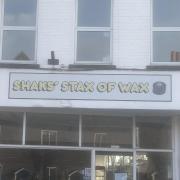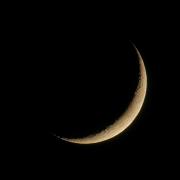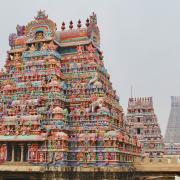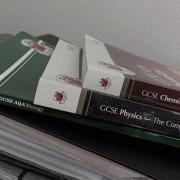
How YouTube Changed the World by Annabel YouTube. Formed in 2005 by three PayPal programmers, it now produces more content in sixty days as the BBC has in the last sixty years. This is the newly formed and constantly expanding realm of youtube.com. YouTube is a household name – over 2.9 billion hours (around 325,000 years) worth of video is watched every month, just from the main sharing site. But YouTube culture is a new concept created by YouTubers and viewers. It is unlike anything else, and provides a one-of-a-kind platform for creativity and community; unique and completely original, waiting for new users to paint upon the canvas of its character. The site is available for almost anyone to upload almost anything to, for free, whether they’re an activist, terrorist, politician, or pop star, or just the proud owner of a grumpy cat. This means that anyone can take their opinion and broadcast it to the world in one click. This very freedom has changed the world. But how exactly has one website had such a massive impact? The easiest answer is this: by taking over every aspect of the world.
“Watch out BBC, ITV, Channel 4. We're the new competition. We're a bit wobbly, but this is one of the ways we want to communicate with people properly,” smiles new Witney MP David Cameron, his wife Samantha scraping plates into the bin in the background while their children leave for school. It’s October 2006 and a new YouTube channel, WebCameron, is set free on the newly popular video-sharing site recently bought by Google. He, and possibly a few others aiding him, realized that YouTube is a place where people get down-to-earth, and that’s exactly what a Downing Street candidate wants – to be a man of the people. As our school’s resident YouTuber Lizzy says, ‘vlogging is your diary to the world.’ Jamal Edwards, a 23-year-old from a London council estate who is now worth £8 million, posted his first YouTube videos aged 15. He has recently stepped into politics, working with Bite the Ballot, the charity that hosted YouTube debates with Nick Clegg, Ed Miliband and Nigel Farage. Edwards believes it’s an essential platform for reaching a younger audience. He’s right. If young people are to get into politics, they need to be shown it in an appealing light, and low-key YouTube videos are perfect. Almost nine years later, Cameron is the Prime Minister of the United Kingdom and YouTube has become a social platform for anyone to get their message across, for good or for bad. It is this breadth of content and ideas that make YouTube so unique – and the fact that anything can be found on it, from ‘giant mutant spider dogs’ to Ku Klux Klan propaganda. This means that it can be used in any aspect of life – and it certainly is.
Another expansion of YouTube is into the entertainment industry. Since Justin Bieber’s internet revelation in 2010, tens to hundreds of millions have been turning to YouTube with their covers of songs in the hope of discovery by record companies. YouTube is now the easiest way to access celebrity interviews, music videos, and behind-the-scenes chats from everywhere under the sun, with some music charts even taking views on YouTube into account when ranking song titles. Some online magazines, such as Clevver TV and Popsugar, even function entirely through YouTube. This makes it even easier to access the showbiz headlines – one tap and you can watch the exclusive interviews yourself, for free, with no transcripts or condescending journalist anecdotes. Many turn to YouTube for their entertainment update, with a huge impact on this genre elsewhere, and bringing YouTube further and further forward.
YouTube has also changed the world of advertising. As Remi Babinet, founder of the Evian baby campaign, says ‘You like a video, you share it, someone else likes it, they share it, and soon enough we’ve got a hundred million views.’ This is true. YouTube also makes it easier for adverts to be rewatched, and harder to skip. A striking advert, an interesting advert, a funny advert, a tear-jerking advert, a cute advert, an advert that appeals to someone watching that video can be easily shared, and soon, as Babinet said, ‘you get a hundred million views.’ He also says ‘at the beginning [the Evian campaign] was only for France, and only TV. And 10 years after, with the same money, we put 'Roller babies' on YouTube, and we reached the world.’ YouTube allows a world market for any project, campaign or business. Our so-called millennial generation watches far less television than their parents, in large part thanks to platforms like YouTube. That makes YouTube critical for reaching them, leaving other advertising far behind.
And finally, there’s the learning side of YouTube. Any new or difficult task can be searched on YouTube for a ‘beginner tutorial’ or ‘DIY tutorial,’ from fixing light bulbs without a screwdriver to fixing make-up without makeup wipes. With an estimated 4 million YouTube beauty channels, there is no shortage of sources for education in that genre. There are also markets for education in areas on YouTube, like the Khan academy, where maths student Salma Khan taught his 12-year-old cousin basics such as fractions and long-division via YouTube. Today, Khan Academy has over 15 million enrolled students and also works with humanities experts from Mountain View, USA. Shawn Mendes, the ‘next Justin Bieber,’ also used YouTube for educational purposes when he taught himself guitar with online tutorials. He is a prime example of how YouTube can be used for more than viewing grumpy cat videos, but for discovering talents and ambitions previously accessible only through private lessons or friends around a campfire.
So its clear that YouTube has taken over our world in many ways, all of which would take a good deal longer to unpack. But advertising, political broadcasting, entertainment and education are four main points to explain. On reflection, it is incredible to think that three people, one website, and ten years have changed our world so much. Who knows what will transform us next?



























